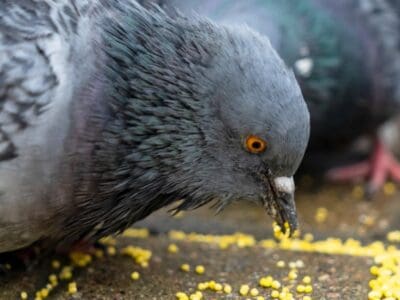Rottweiler
Canis lupus
Strong, loyal and self-assured!
Advertisement
Rottweiler Scientific Classification
- Kingdom
- Animalia
- Phylum
- Chordata
- Class
- Mammalia
- Order
- Carnivora
- Family
- Canidae
- Genus
- Canis
- Scientific Name
- Canis lupus
Read our Complete Guide to Classification of Animals.
Rottweiler Conservation Status
Rottweiler Facts
- Temperament
- Loyal, affectionate, calm, quiet, sensitive and protective
- Diet
- Carnivore
- Common Name
- Rottweiler
Rottweiler as a Pet:
- General Health
- Energy Level
- Shedability
- Trainability
- Intelligence
- Tendency to Chew
- Size
- Family and kid friendliness
- Yappiness / Barking
- Low
- Separation Anxiety
- Moderate
- Preferred Temperature
- Warm climate
- Exercise Needs
- Moderate
- Friendly With Other Dogs
- Moderate
- Pure bred cost to own
- $1,150
- Dog group
- Working
- Male weight
- 110-132 lbs
- Female weight
- 77-105 lbs
This post may contain affiliate links to our partners like Chewy, Amazon, and others. Purchasing through these helps us further the A-Z Animals mission to educate about the world's species.
View all of the Rottweiler images!
The Rottweiler is also known as the Rottie, the Rott, or Rottweil Metzgerhund (German for “Butcher’s Dog”).
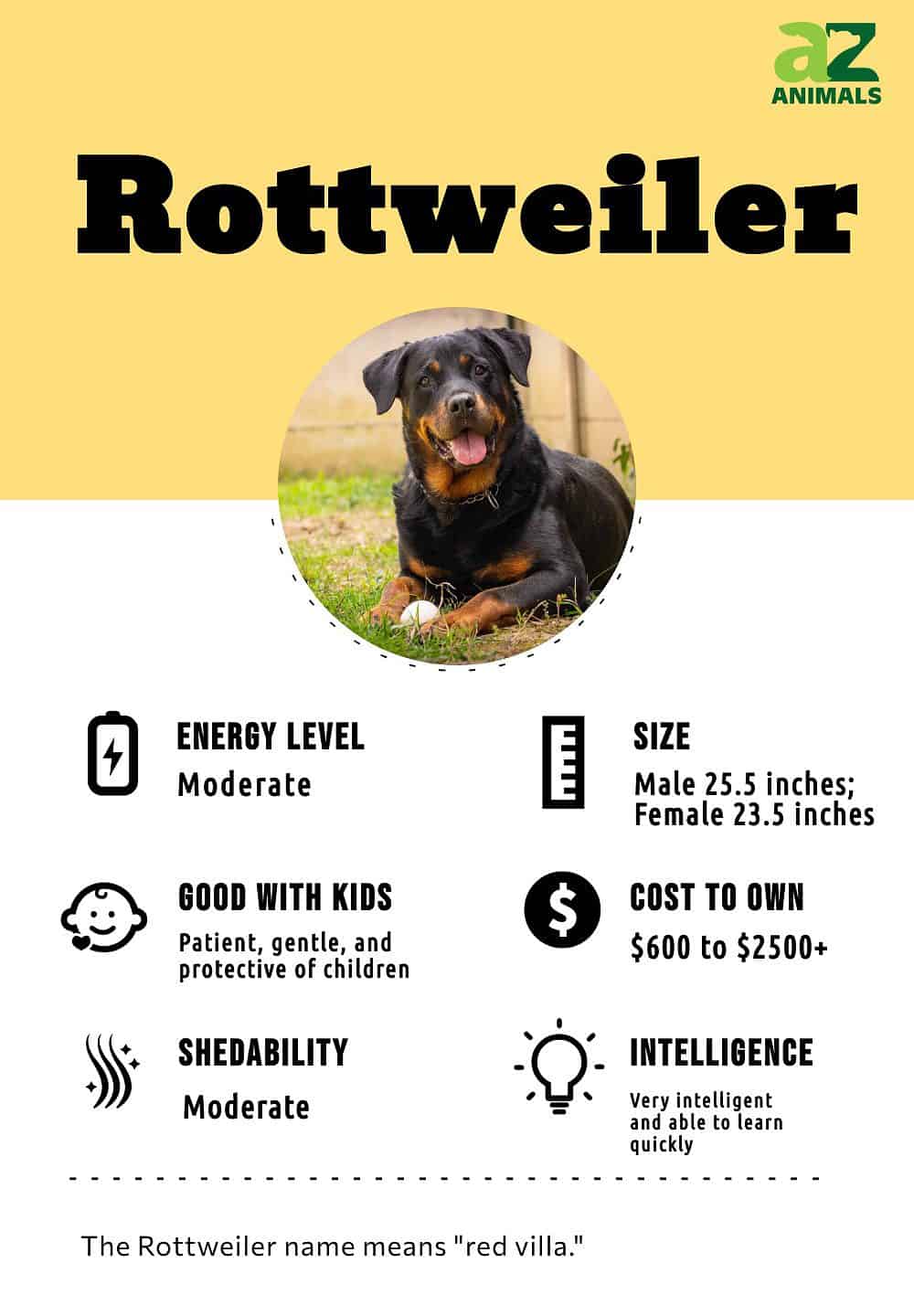
It is the 8th most popular dog according to the American Kennel Club, one of the 10 smartest dogs, and one of the most loyal breeds. Descended from the ancient Roman drover dog and related to the Italian Mastiff, the Rottweiler is thought to be one of the oldest dog breeds. It was developed in Rottweil, Germany, where a Roman army had settled in the 2nd century. It was used to herd cattle, for bear hunting, or for pulling small carts.
See all of our expert product reviews.
Through the Middle Ages and the Renaissance, the Rottweiler was employed by butchers to carry their money in a neck pouch when they went to market. Today, the working dog makes an excellent police, service, or guard dog, or family pet.
You can check out incredible facts about Rottweilers.
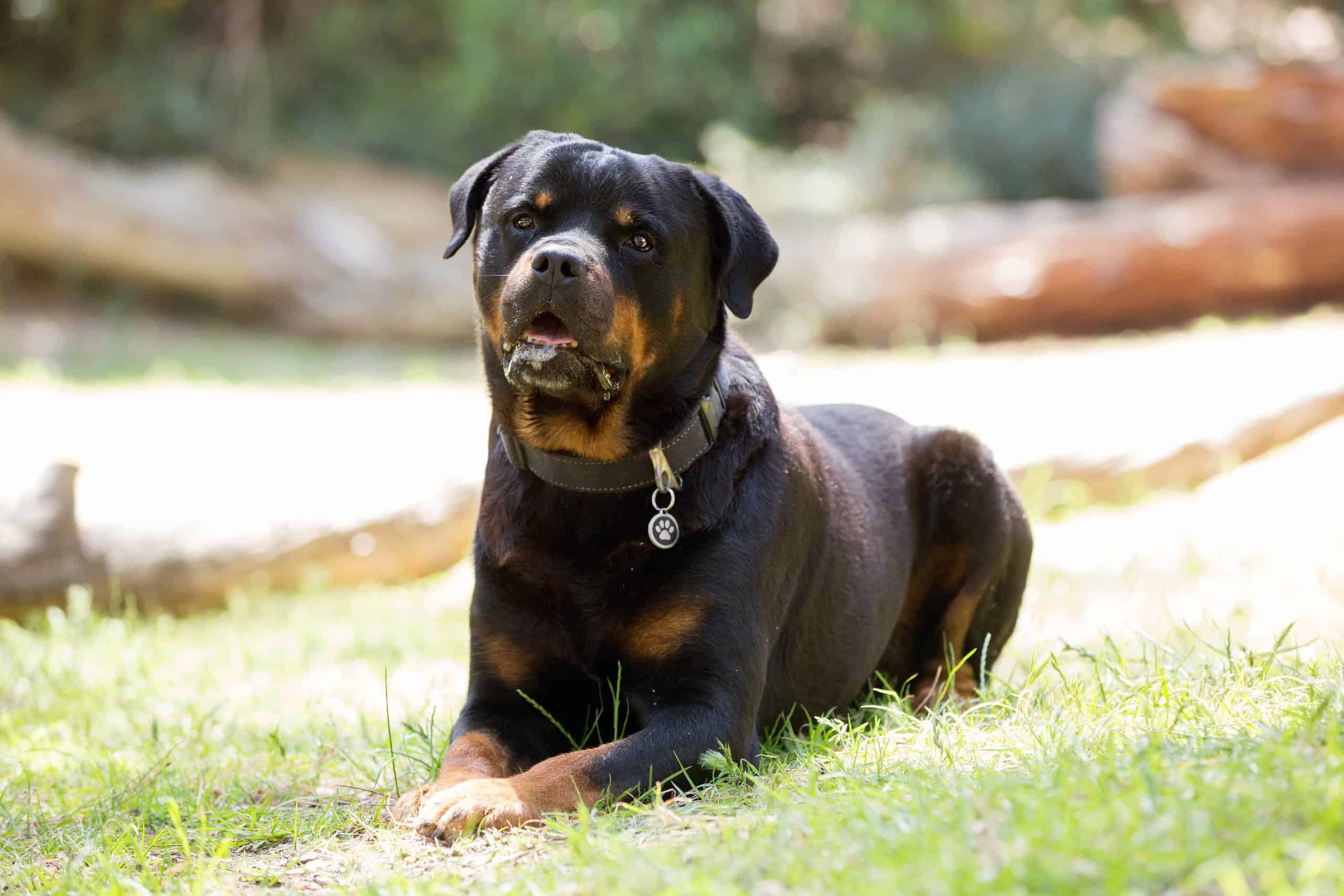
Rottles possess many beneficial characteristics from their Rottweiler DNA.
©McCann Michelle/Shutterstock.com
3 Pros and Cons of Owning Rottweilers
| Pros! | Cons! |
|---|---|
| It’s a great guard-dog. This breed is famous for its protectiveness towards its family around strange people. It is also wary of strange dogs. | It has a tendency to chew. After the normal puppy teething phase, an adult Rottie can resort to chewing on furniture and other items in the house if it is bored or anxious |
| It’s very intelligent. This breed was tested and can learn a command after only 5 times. It is adaptable and can even go hunting, as long as the size of the game is appropriate — its strong bite can crush small game. | It may have a shorter lifespan than other breeds. Compared to other dog breeds of similar size and weight, its lifespan is shorter. This is due to the prevalence of cancer in the breed. Otherwise, it would have a normal healthy lifespan. |
| It’s adaptable. Although it’s used to being a strong working dog, the Rottie can easily get used to lounging around on the couch with family at home. Just remember to give it daily exercise and mental stimulation so it doesn’t resort to destructiveness. | It’s more expensive. The Rottweiler is one of the oldest dog breeds originating from Roman times. It is also one of the most expensive dog breeds, whether you are getting a pet or show quality. However, the more expensive the puppy and responsible the breeder, the stronger health-wise the dog will be. |
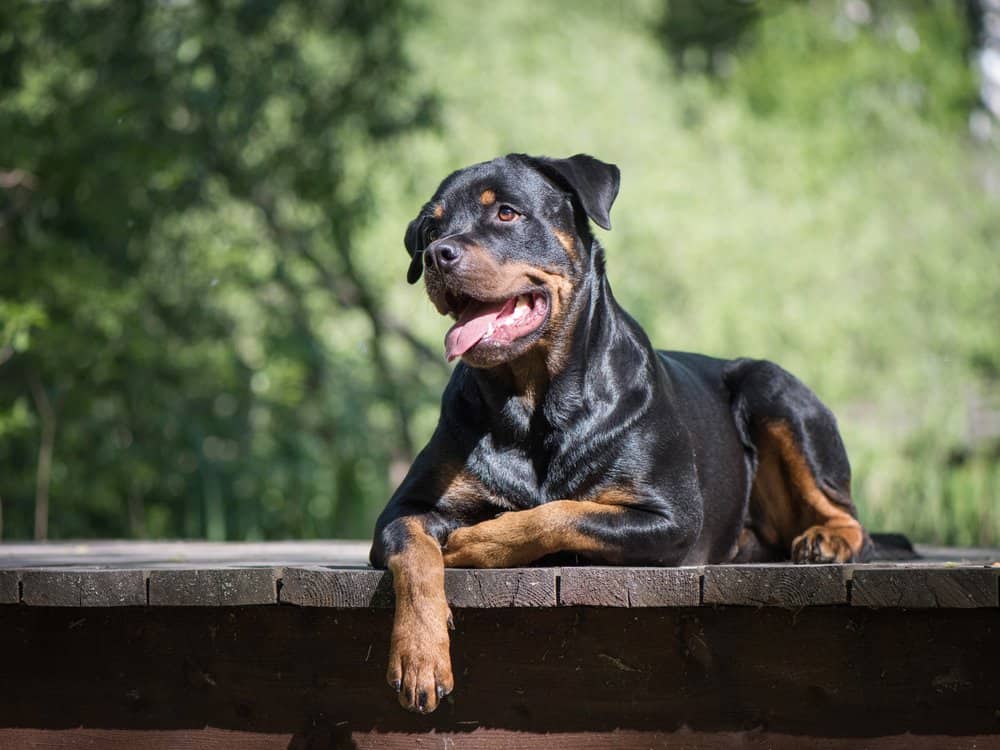
©EKATERINA SOLODILOVA/Shutterstock.com
Health and Entertainment for your Rottweiler
See all of our expert product reviews.
Rottweiler Size and Weight
The Rottweiler is a medium large to large size short hair dog with an average height of 25.5 inches for males and 23.5 for females. Males weigh about 121lbs fully grown, while females weigh about 96lbs fully grown. Rottweiler puppies weigh on average 13.5lbs at 8 weeks of age and are considered adults between 24-36 months.
| Male | Female | |
|---|---|---|
| Height | 25.5″ tall | 23.5″ tall |
| Weight | 121lbs, fully grown | 96lbs, fully grown |
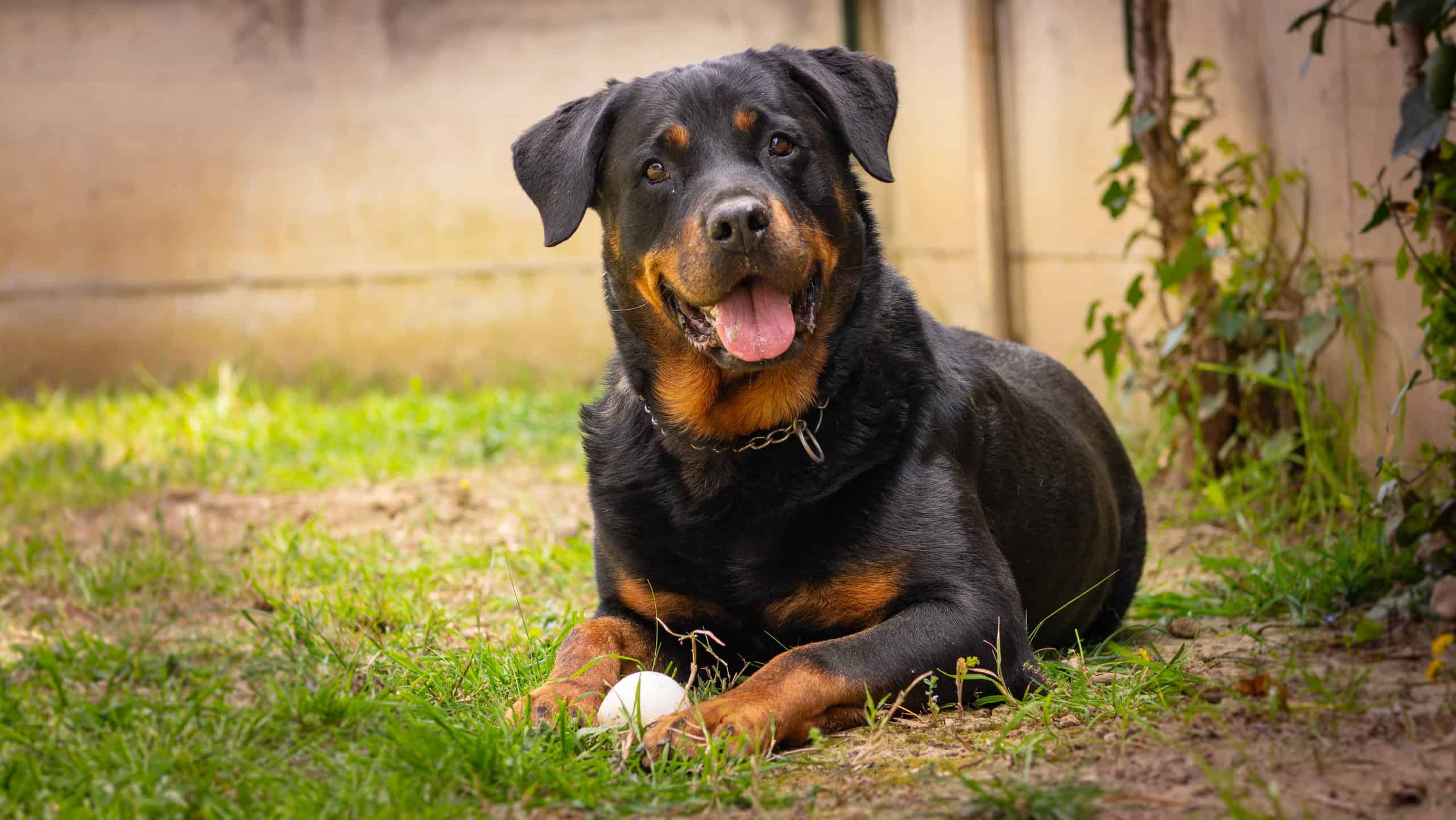
©nicolas.fontana/Shutterstock.com
Rottweiler Common Health Issues
Purebred Rottweilers have some common health issues. The most common are eye issues such as Progressive Retinal Atrophy and Cataracts. A heart disease called Aortic Stenosis results in abnormal rhythm and can cause heart attacks. Joint and bone issues such as hip dysplasia, elbow dysplasia and osteochondritis dessecans are also unique to the breed. Finally, cancer complications was the cause of death of 43% in a group of Rottweilers in one recent study. The breed is prone to liver, spleen and bone cancer along with lymphoma. In sum, the most common health issues with Rottweilers are:
- Eye conditions
- Aortic stenosis
- Joint problems
- Cancer
Rottweiler Temperament
The Rottweiler is famous for having a loyal, affectionate, sensitive and protective personality. Due to its calm and quiet temperament it is a popular choice for families, including those with children. It is no more dangerous than any other dog breed but its behavior can become rebellious if it is not trained or socialized properly.
This does not mean they cannot be trained, though. They are very intelligent and take quickly to obedience training. Traits of loyalty, adaptability and eagerness to work with the instinct to hunt and herd are common to both males and females. However, a 2008 study found that confidence, sharpness, defense and play drives were higher in males than in females.

Be sure to feed your Rottweiler a high-quality, protein-heavy diet, and minimize the empty calories.
©Dmitriev Mikhail/Shutterstock.com
How To Take Care of Rottweilers
Rottweilers are not recommended for new or inexperienced dog owners. Regardless, they have unique needs, especially if they are puppies. Whether it’s teething, training or health issues, Rottweilers have breed-specific issues that must be considered.
The Best Dog Food for Rottweilers
Rottweilers need nutritious food that gives them the energy they need without resulting in excess weight. As a result, they need a high protein, meat-based diet. Since this breed can suffer from the heart disease aortic stenosis, owners should educate themselves about legume-free dog food, and discuss the health dangers of legumes with their vet.
Rottweiler puppy food: Rottweiler puppies need a lot of protein to develop muscles and build strength as well as fulfill the high energy needs of their puppyhood. Their diet should contain 24-28% protein and 14-18% fat .
Rottweiler adult dog food: Like puppy food considerations, pet owners should feed their adult Rottweiler food that is high in protein and low in fat. It should contain 22-26% protein and 12-16% fat.
So, at A-Z Animals, we think the Best Dog Food For Rottweilers is the Royal Canin Breed specific Rottweiler formula.
This food has a good ratio of protein and fat for large dogs like Rottweilers, without the legume ingredients like peas and lentils that aren’t good for dogs’ hearts. Your dog’s joints will benefit from the glucosamine and chondroitin sulfate that come from quality turkey and chicken. Plus, the taurine has the dual benefit of maintaining the eyes and vision as well as a healthy heart, plus antioxidants for overall wellbeing.
- Specialized Formula For Rottweilers
- Larger kibble for slower intake and digestion
- Higher protein and L-Carnitine content to support muscle growth
We have different recommendations if your Rottweiler is a puppy, senior, or if you are lookin for a more affordable alternative to the Royal Canin recommendation. Please read our complete Rottweiler dog food guide for more information.
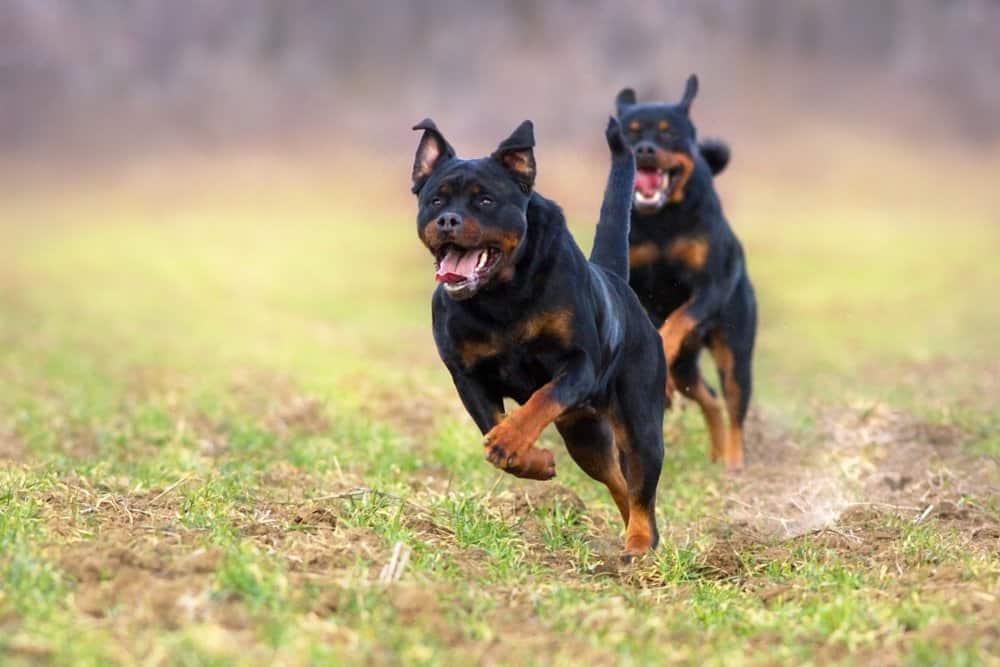
Rottweilers need obedience training early in life because of their large size.
©Callipso/Shutterstock.com
Rottweiler Maintenance And Grooming
The German breed has a short-medium length, coarse, dense and flat outer coat and an undercoat. The undercoat thickens as much as necessary according to the surrounding climate, and it also seasonally gets thicker during winter and thinner during summer. As a result, it changes its coat during spring and fall and so undergo more shedding than usual and needing grooming more often. Some dogs living in hot climates do not have undercoats.
Fortunately, the breed is very easy to take care of. It only needs a monthly bath and grooming every 4 to 8 weeks, with a weekly coat brushing and more frequent brushing during the spring and fall.
Rottweiler Training
Due to its large size, the Rottweiler needs obedience training as early as possible — it’s a lot of dog to handle. You should start training your Rottweiler as early as 6 weeks but no later than 6 months of age. A strong handler can establish dominance as the pack leader and be patient enough to provide socialization and positive reinforcement for proper behavior around strangers and other dogs.
Rottweiler Exercise
The Rottweiler needs daily exercise, but it isn’t overly demanding. A short walk and a longer walk is fine. Indoors, it enjoys chewing toys and games or other mental stimulation.
Rottweiler Puppies
Rottweiler puppies are much like puppies of any other dog breed, and hence are energetic and playful. They go through teething between 6 weeks to 6 months of age and during this time they will chew on anything, so they need to get used to chew toys early on. Neediness may be apparent early on in puppyhood along with separation anxiety.
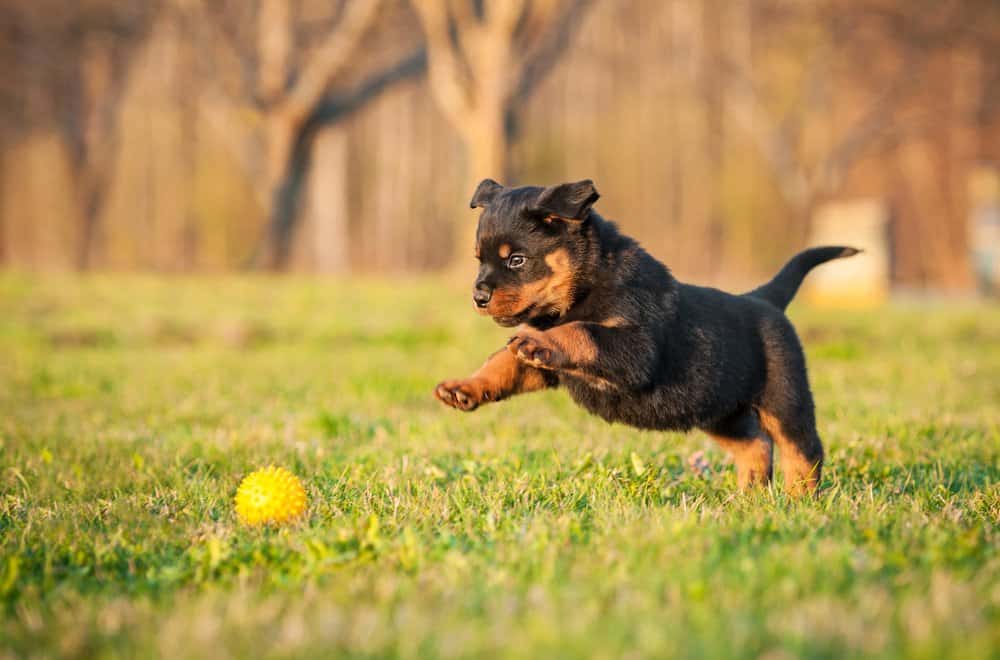
©Rita_Kochmarjova/Shutterstock.com
Rottweilers And Children
Rottweilers are patient and gentle around children, and the longer they are around them, the more protective they become. Due to the rowdiness of young children, they should be supervised around a Rottweiler and taught to treat the dog gently.
Types
While you may see a headline that declares there are three types of Rottweiler — German, American, and Roman — upon closer examination you will discover that there really aren’t three distinct types. An American Rottweiler is simply one that is born in the United States where breeding regulations are looser than in Germany, so the dog might have a mix of other breeds and be only predominantly German.
The Roman Rottweiler, also know as the Gladiator or Colossal Rottweiler, is the product of breeders who mix German Rottweilers with larger dogs to make a bigger “Rottweiler.” This type is not recognized by the AKC or other kennel clubs responsible for maintaining breed standards. In other words, there is really only one type of Rottweiler, and that is German. The others are pretenders.
Dogs Similar to Rottweilers
Other dog breeds similar to the Rottweiler are Italian Mastiff, Doberman Pinscher and Bernese Mountain Dog.
- Labrador – Shares similarities in training but has different socialization needs. It’s also a more popular breed.
- Boxer – A German breed like the Rottweiler, it is a little shorter, lives longer, and is easier to train.
- Bullmastiff – Similar to the Rottweiler but from England, it is less expensive to own, not as playful, and not as intelligent.
Famous Rottweilers
A number of rotties have made it to television. The large dogs with their lovable and companionable demeanor and silly antics have endeared many fans. Movies like The Omen, Lethal Weapon 3, Entourage, Man’s Best Friend and Half-Baked are just a few examples where their physical stature made them a favorite for silver screen roles.
Popular Names for Rottweilers
Popular names for Rottweilers include:
- Roxie
- Bella
- Bear
- Max
- Zeus
Rottweiler FAQs (Frequently Asked Questions)
What does a Rottweiler dog look like?
The Rottweiler has a black coat with rich tan markings, a broad skull and muzzle, a strong neck, a deep chest, a curved tail, and a trotting gait. Although its tail was traditionally docked at the first or second joint, tail docking is banned in most countries, a fact that is stated in the FCI Country of Origin Breed Standard.
Is a Rottweiler a good family dog?
Yes, the Rottweiler is a good family dog that is sweet, protective, affectionate, and loyal.
Are Rottweilers good with kids?
Yes, Rottweilers can be wonderfully gentle and patient with kids with the proper socialization and training.
How long do Rottweilers live?
They generally live 10-12 years.
How much does a Rottweiler cost to own?
A pet quality Rottie can cost $500-2,000 while a show quality is from $2,500-4,000.
Are Rottweilers dangerous?
Rottweilers can be dangerous with poor socialization or training for aggression coupled with their large size and powerful bite.
What is the best dog food for a Rottweiler?
Premium, large breed dog food is best for a Rottweiler.
Are Rottweilers smart?
Rottweilers are one of the 10 smartest dog breeds and are moderately easy to train.
Are Rottweilers herbivores, carnivores, or omnivores?
Rottweilers are Carnivores, meaning they eat other animals.
What Kingdom do Rottweilers belong to?
Rottweilers belong to the Kingdom Animalia.
What class do Rottweilers belong to?
Rottweilers belong to the class Mammalia.
What phylum to Rottweilers belong to?
Rottweilers belong to the phylum Chordata.
What family do Rottweilers belong to?
Rottweilers belong to the family Canidae.
What order do Rottweilers belong to?
Rottweilers belong to the order Carnivora.
What type of covering do Rottweilers have?
Rottweilers are covered in Hair.
What genus do Rottweilers belong to?
Rottweilers belong to the genus Canis.
What is an interesting fact about Rottweilers?
Rottweilers are strong, loyal, and self-assured!
What is the scientific name for the Rottweiler?
The scientific name for the Rottweiler is Canis lupus.
What's the difference between Rottweilers and German Shepherds?
There are a few key differences between Rottweilers and German Shepherds, namely that Rottweilers grow far larger than German shepherds on average. German Shepherds also have thicker fur compared to the short fur of the Rottweiler.
What's the difference between Roman Rottweilers and German Rottweilers?
There are differences between Roman Rottweilers and German Rottweilers, namely in their sizes and temperaments. German Rottweilers are also more likely to have bushy tails compared to Roman Rottweilers.
What is the difference between German Rottweilers and American Rottweilers?
The primary difference between German Rottweilers and American Rottweilers is simply where they’re bred. However, German Rottweilers tend to be a bit thicker while American Rottweilers have a more sleek appearance.
What is the difference between a Rottweiler and a Cane Corso?
Both the Rottweiler and Cane Corso are large, working-class dogs that can make great guard dogs and family pets. While breed-specific training is suggested for each of them, it is possible that the Rottweiler may be more kid-friendly.
What are the differences between a Bullmastiff and a Rottweiler?
The key difference between the Bullmastiff and Rottweiler is appearance. While Rottweilers are always black with markings, bullmastiffs have several color variations.
You can read about all the other differences here.
What's the difference between an Akita and a Rottweiler?
The largest difference between Akitas and Rottweilers is trainability. While Rotties can be slightly stubborn, they have nothing on Akitas, who can be a challenge to train.
Other key differences include size, appearance, lifespan, temperament, grooming, drooling level, energy level, and barking level.
What are the key differences between Beauceron and Rottweiler?
The key difference between a Beauceron and a Rottweiler is temperament. While Rotties are more protective and make better guard dogs, Beaucerons tend to be more reserved around strangers.
Other differences include size, appearance, lifespan, trainability, grooming, shedding, drooling, energy level, and barking level.
What are the key differences between the Serbian Rottweiler and the German Rottweiler?
The main difference between Serbian and German Rottweilers is health, and poor breeding in Serbian lines has led to many additional health problems for the poor pups.
Thank you for reading! Have some feedback for us? Contact the AZ Animals editorial team.
Sources
- David Burnie, Dorling Kindersley (2011) Animal, The Definitive Visual Guide To The World's Wildlife
- Tom Jackson, Lorenz Books (2007) The World Encyclopedia Of Animals
- David Burnie, Kingfisher (2011) The Kingfisher Animal Encyclopedia
- David Burnie, Dorling Kindersley (2008) Illustrated Encyclopedia Of Animals
- Dorling Kindersley (2006) Dorling Kindersley Encyclopedia Of Animals
- Wikipedia, Available here: https://en.wikipedia.org/wiki/Rottweiler
- Rottweilers Online, Available here: https://www.rottweilersonline.com/general/can-rottweilers-be-kept-outdoor-dogs
- The Smart Canine, Available here: https://thesmartcanine.com/do-rottweilers-shed/
- Rottweiler Pup Dog, Available here: https://rottweilerpupdog.com/common-rottweiler-health-problems/
- Dogs Health, Available here: https://www.dogzhealth.com/rottweiler-health-problems/
- Your pure bred puppy, Available here: https://www.yourpurebredpuppy.com/health/rottweilers.html
- Vetstreet, Available here: http://www.vetstreet.com/dogs/rottweiler
- Canine Journal, Available here: https://www.caninejournal.com/rottweiler/
- Pet Educate, Available here: https://peteducate.com/do-rottweilers-bark-a-lot/
- Rottweiler Life, Available here: https://www.rottweilerlife.com/male-vs-female-rottweiler-the-facts-before-you-before-you-bring-one-home/











